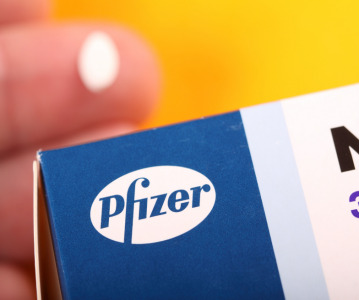Gender equity in pharma– beyond the boardroom
.png)
Three reasons why advancing gender equity in healthcare should be a priority for pharma
February 11, 2023 marks International Day of Women and Girls in Science. As we celebrate the contributions of women in the pharmaceutical industry throughout the supply chain, we take a look at a lesser-known challenge facing pharma, that of gender disparity in drug development and healthcare administration.
From clinical trials to post-market surveillance and pharmacovigilance, we hope to highlight the importance of gender equity in pharmaceuticals and the healthcare industry as a whole.
1) A disease may not discriminate based on sex but pharmacodynamics do
Particular drugs can present pharmacodynamic differences between males and females, which could cause potentially fatal outcomes. While sex differences may seem an obvious factor to consider, women have historically lacked representation in studies regarding potential therapeutics for diseases that affect both men and women, whether due to political interventions or from societal biases. Clinical trials of therapeutics that do not account for sex as a variable may put women at risk for impairments not detected in their male counterparts. This was the case for patients taking zolpidem, a drug used for the indication of insomnia [i].
Women taking the drug were found to have twice the level of metabolized product in their bloodstream. This resulted in their being at a greater risk for impaired driving the following morning than men [i]. To achieve an equal understanding of how their products operate within the human body, pharmaceutical companies must not take the male body as the standard and take into consideration the biology of their subjects when trialling innovative drugs, which includes accounting for the female anatomy.
2) Healthcare disparities for women continue to exist even after commercialisation
Various studies have found that women are more likely to receive worse medical treatment than men, half as likely to receive painkillers after surgery, and receive less health monitoring while taking potentially more harmful medication [ii]. This healthcare ‘gender gap’ has manifested within the pharmaceutical industry with the historical exclusion of women in post-market surveillance studies
Though acts such as the US National Institutes of Health Revitalization Act and 1995 Beijing Declaration and Platform for Action have made it clear that the inclusion of women in preclinical and clinical trials is essential to identify sex differences for new drug development, such practices have yet to extend to pharmaceutical research and regulation. In sectors such as post-market pharmacovigilance, use, and access, issues include incomplete product information sheets, and fewer guidelines for women with specific conditions, such as pregnant women, because of their continued exclusion from preclinical or clinical trials [i]. Pharmaceutical players across the drug development, manufacturing, and commercial pipeline must prioritise equal treatment of the sexes in order to ensure patients of any gender, age, or ability have access to the treatments they need.
3) Regulatory approval gap for gender-specific pharmaceuticals could discourage innovation
In both the United States and Japan, Viagra was approved within 6 months for the indication of erectile dysfunction in males. In contrast, both countries took years to approve a medical abortion pill – 4 years for the US FDA and 35 years for the Ministry of Health in Japan [vi]. Both pharmaceutical products pertain to sexual health, yet one prioritises male sexual pleasure and the other does not. With such long wait times to approval and to market, drug innovators may be less inclined to develop products for gender-specific conditions, stymieing true pharmaceutical innovation and perpetuating an imbalanced healthcare environment. While the social politics of these discrepancies can be uncomfortable to discuss within the pharmaceutical lab – a science-based environment that should, ideally, be neutral – it is impossible to claim to be an equal industry when pharmaceutical products are not reaching their intended patients in equal measure.
When considering gender disparity in pharma, we should not only seek the increased representation of women in executive roles or leadership positions, but also an approach to equity which runs throughout the drug development process. As Ilyssa Hollander of Social Sectors Development Strategies Inc. states: “When socio-political influences can jeopardize public health and security, there is a need to control or mitigate, such influences [vi].”
[ii] https://lordslibrary.parliament.uk/womens-health-outcomes-is-there-a-gender-gap
[iii] Making pharmaceutical research and regulation work for women | The BMJ
Related News
-
News US FDA adds haemodialysis bloodlines to devices shortage list
On March 14, 2025, the US FDA published an open letter to healthcare providers citing continuing supply disruptions of haemodialysis bloodlines, an essential component of dialysis machines. -
News Women in Pharma: Manufacturing personal and team success
Our monthly Women in Pharma series highlights the influential lives and works of impactful women working across the pharmaceutical industry, and how the industry can work towards making the healthcare industry and workplace more equitable and inclusive... -
News Pfizer may shift production back to US under Trump pharma tariffs
At the 45th TD Cowen annual healthcare conference in Boston, USA, Pfizer CEO Albert Bourla outlined the potential for Pfizer to shift its overseas drug manufacturing back to the US as pharmaceutical industry players weigh their options against Presiden... -
News Experimental drug for managing aortic valve stenosis shows promise
The new small molecule drug ataciguat is garnering attention for its potential to manage aortic valve stenosis, which may prevent the need for surgery and significantly improve patient experience. -
News Women in Pharma: Connecting accessible pharma packaging to patients – a Pharmapack Special
Throughout our Women in Pharma series, we aim to highlight how CPHI events encourage discussions around diversity, equity, and inclusion initiatives in the pharmaceutical industry. -
News Vertex Pharmaceuticals stock jumps as FDA approves non-opioid painkiller
UK-based Vertex Pharmaceuticals saw their stock shares soar as the US FDA signed off on the non-opioid painkiller Journavx, also known as suzetrigine, for patients with moderate to severe acute pain, caused by surgery, accidents, or injuries. -
News Trump administration halts global supply of HIV, malaria, tuberculosis drugs
In various memos circulated to the United States Agency for International Development (USAID), the Trump administration has demanded contractors and partners to immediately stop work in supplying lifesaving drugs for HIV, malaria, and tuberculosis to c... -
News 2024 Drug Approvals: a lexicon of notable drugs and clinical trials
50 drugs received FDA approval in 2024. The centre for biologics evaluation and research also identified six new Orphan drug approvals as under Biologics License Applications (BLAs). The following list picks out key approvals from the list, and highlig...
Recently Visited
Position your company at the heart of the global Pharma industry with a CPHI Online membership
-
Your products and solutions visible to thousands of visitors within the largest Pharma marketplace
-
Generate high-quality, engaged leads for your business, all year round
-
Promote your business as the industry’s thought-leader by hosting your reports, brochures and videos within your profile
-
Your company’s profile boosted at all participating CPHI events
-
An easy-to-use platform with a detailed dashboard showing your leads and performance








